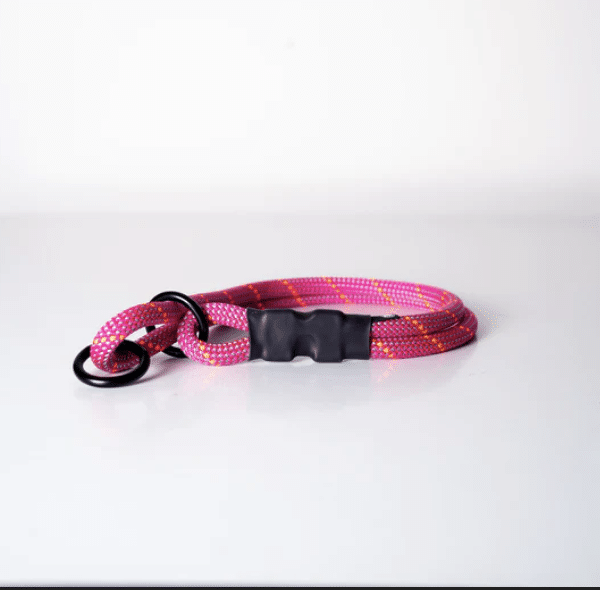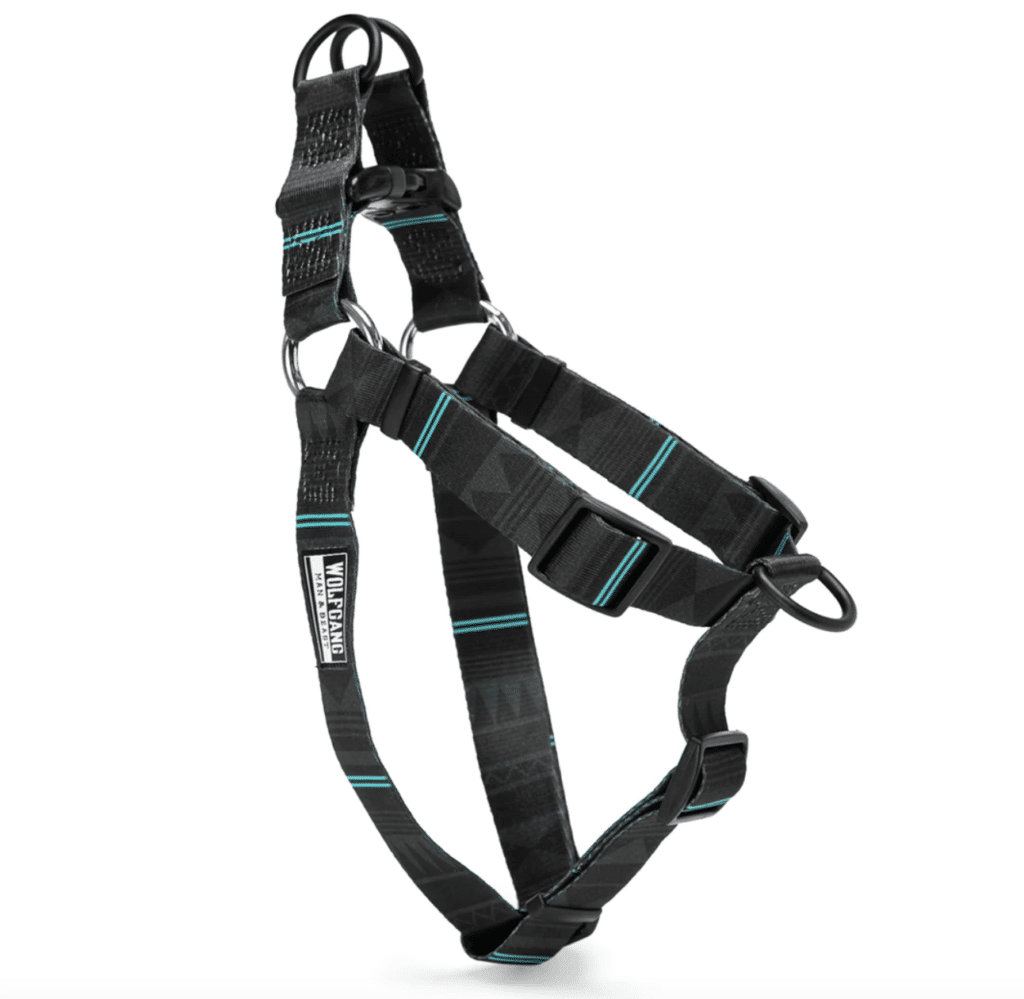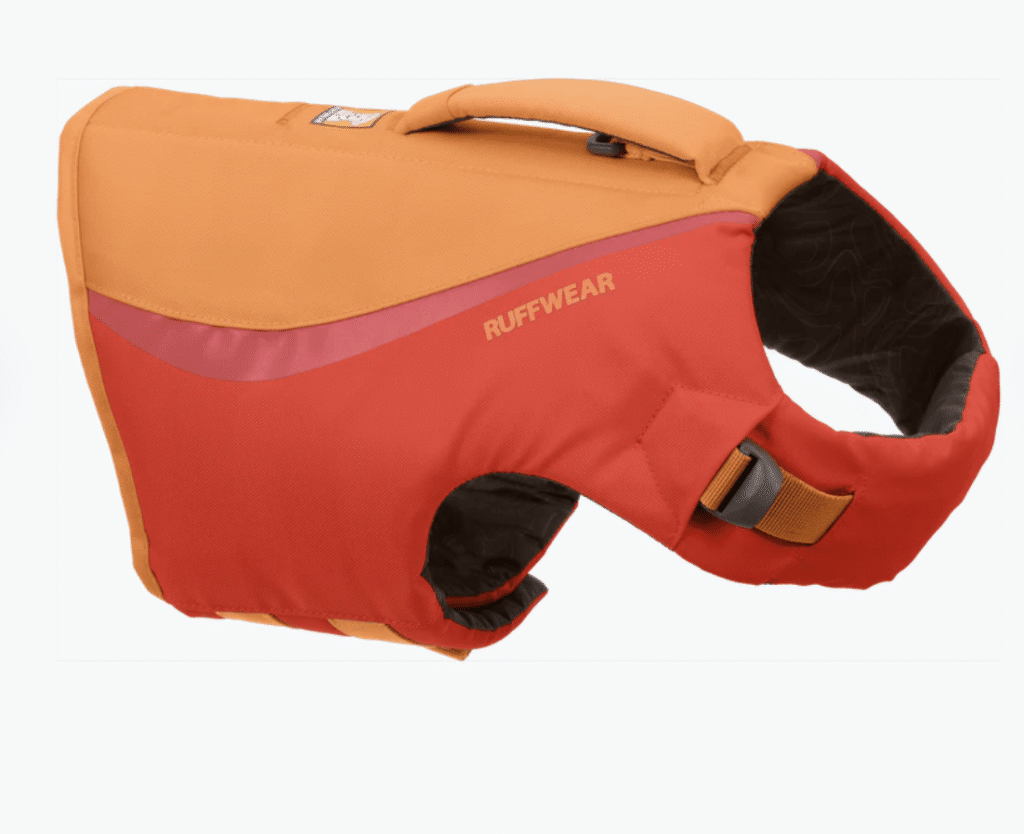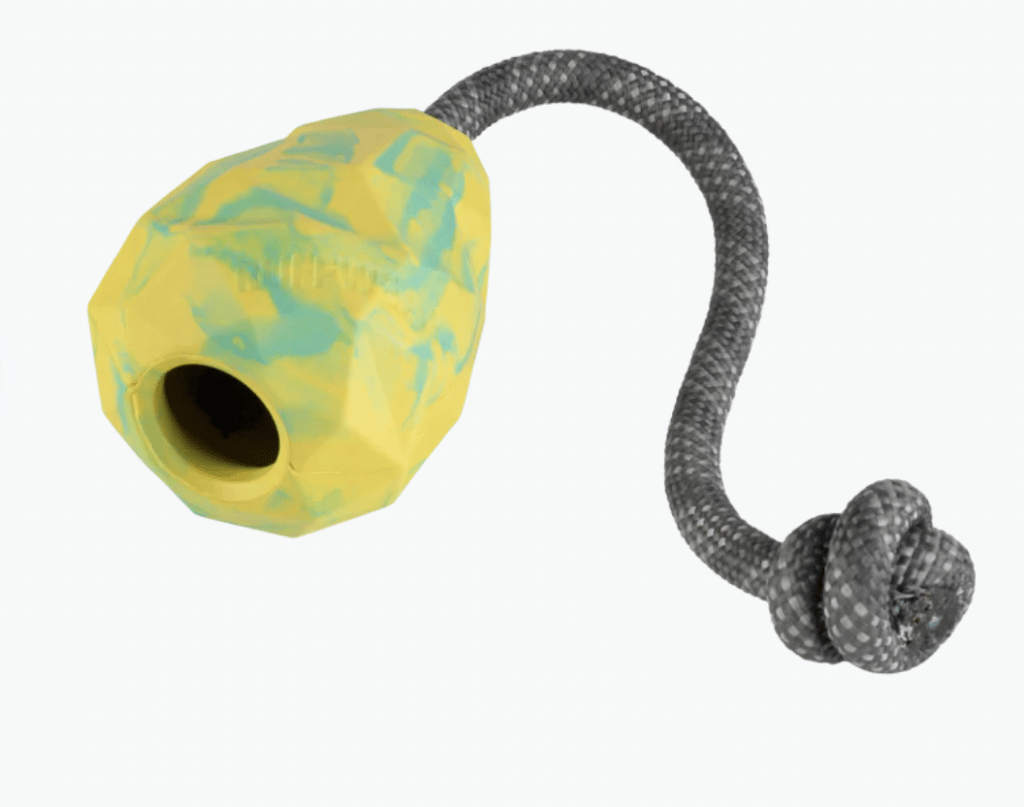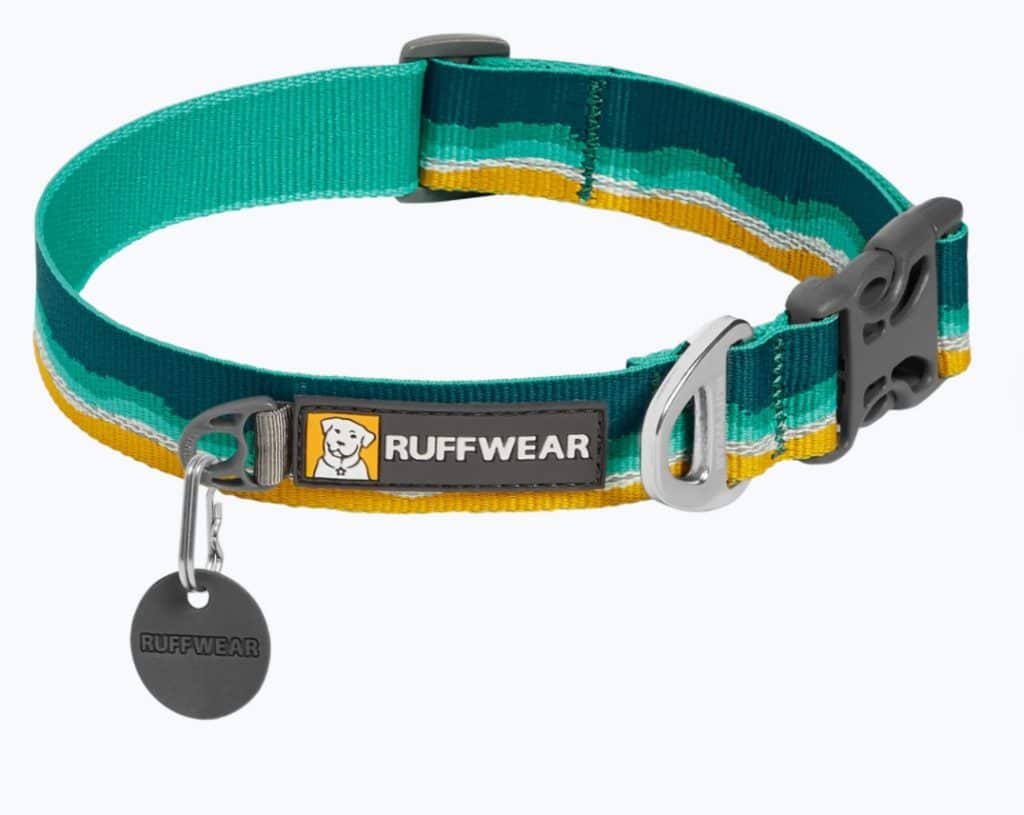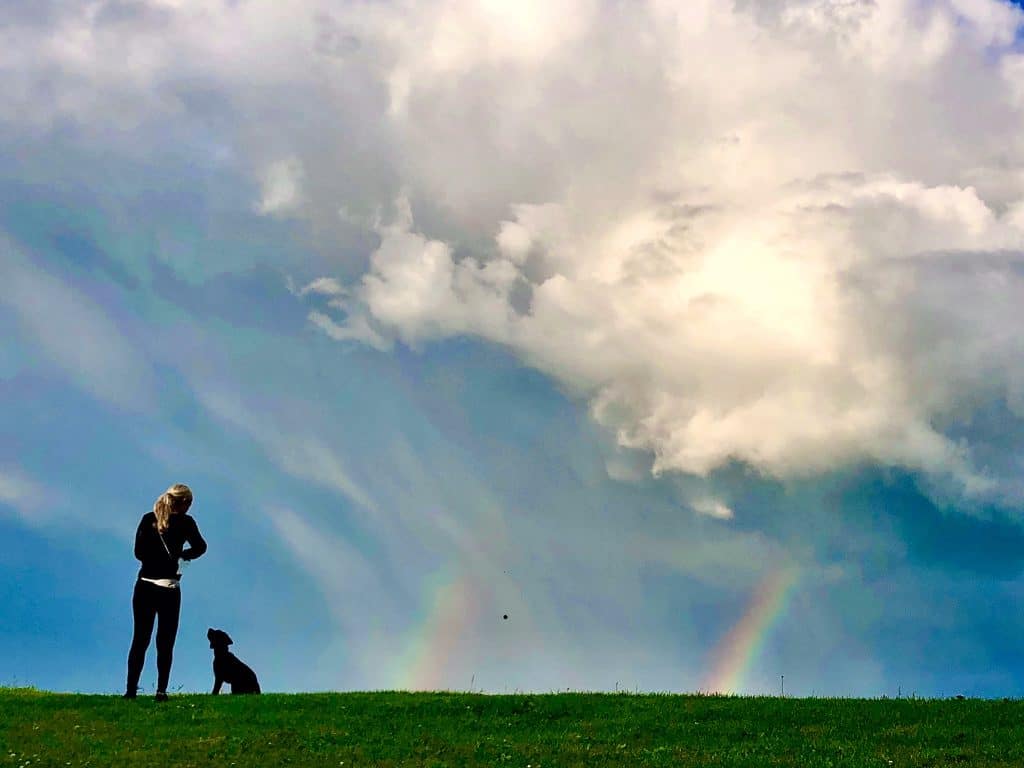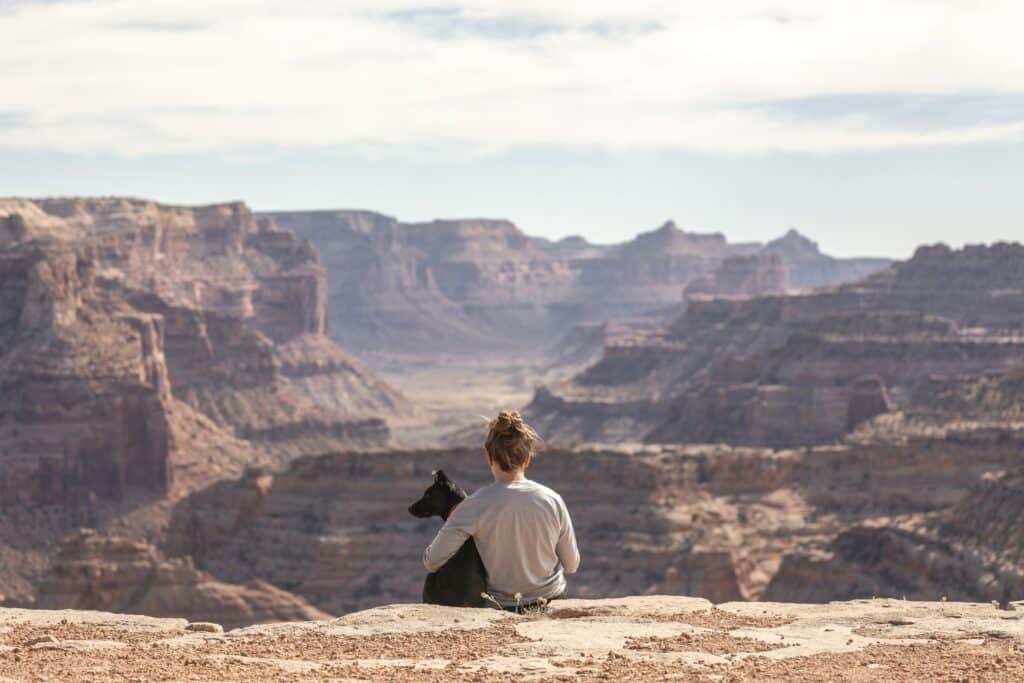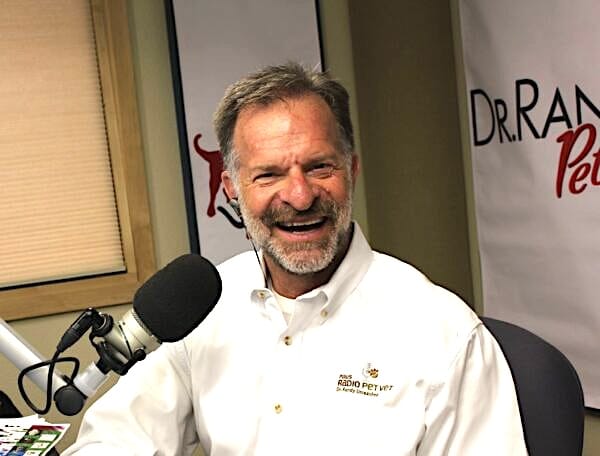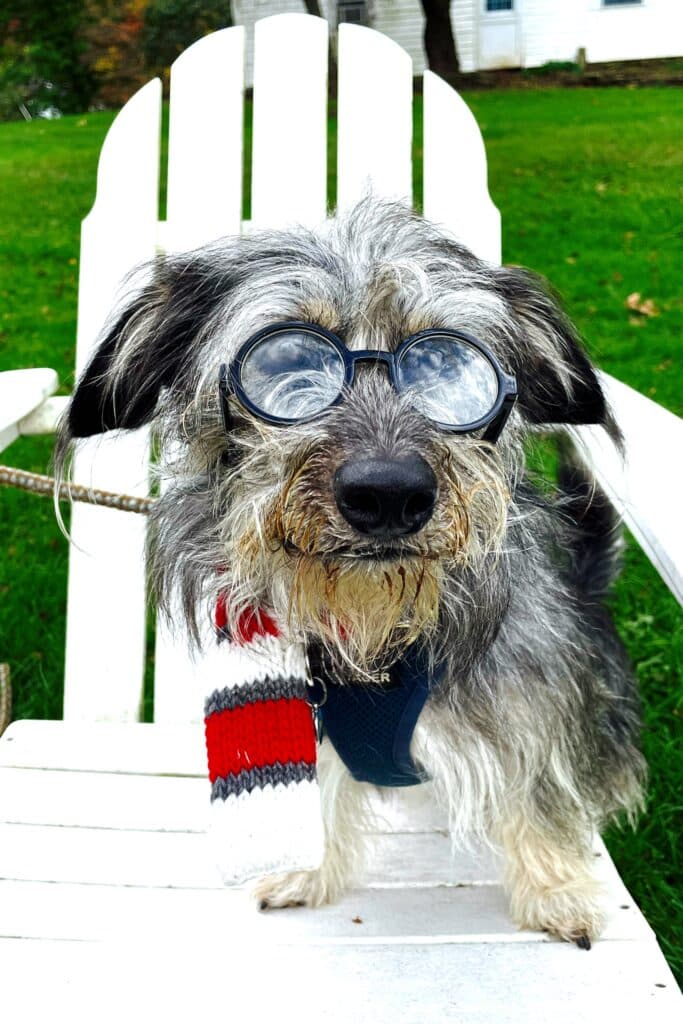I don’t know why wolves call—howl—more in winter. Maybe it’s because by then most of the people have left the woods. Maybe it’s because almost everything else has left the woods also. Most of the birds have flown south. The bears—what few grizzlies remain, in the wilder corners of Montana, such as the Yaak Valley—have gone underground. Salamanders, turtles, snakes: so much disappears into the underworld, as if metamorphosing to ice in the long sleep, even in a burning world that few if any understand any longer. Certainly, not our kind. Or rather, we understand the burning all too well, but have decided, it seems, to just keep bringing the hurt: to ourselves, our own kind, and to every other living thing. Christianity preaches that we were made in God’s own image, and that may or may not be true. A good argument could be made, however, that any similarity ends there.
The wolves’ howls sound like the sound of loneliness, even when they’re in the midst of a pack. As if they’ve tapped into some river of sorrow that runs like blood just beneath the snow. As if they have been separated from something.
They are separated from nothing. It’s hard to imagine a life form more fitted to its ecosystem—an animal so central that it drives or governs nearly all other parts in that system. What our species might then think of as a god or deity.
Wherever wolves still exist, they are the center, the heart, of all else. It is only we who perceive them to be on the outside of things—never central, and rarely even glimpsed.
I think they are howling at something we cannot see. I think they are howling at something we look away from and pretend does not exist. Something which we cannot understand or, more likely, choose not to understand: like how to survive in a burning world,. Perhaps another thing we are unwilling to look at: that for joy to exist, there may need to be a sorrow to anchor it.
But if that is true, then so too must be the converse: that the sorrow cannot exist without the joy. That the two are twinned and twined. That the living is composed of the dying.
I think the wolves keep trying to tell us that, and we keep looking away.
I am not saying we, or our failings, are the reason they howl. That would give us too much import. All I mean is that although wolves are like us in some ways, they are our opposites in others. After all, if we cannot see the way of the world, something else can, must, and will. That is the way of the world: for truth to emerge. No matter how much others might labor to avoid it.
***
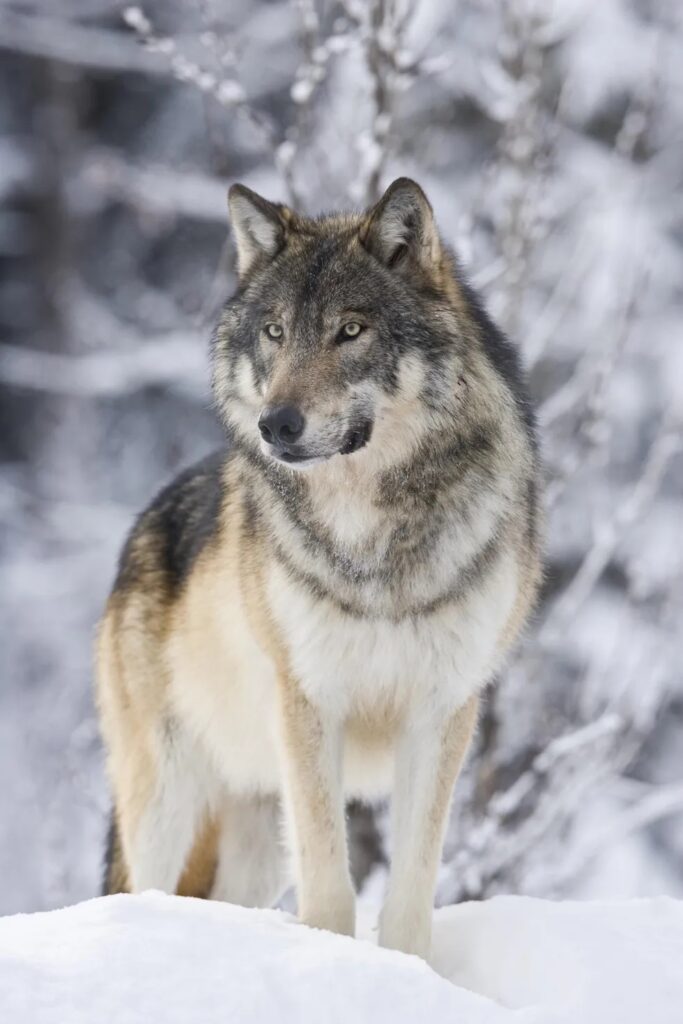
A wolf of the Jacque Lake pack in west central Alberta, Canada, after a January snow.
Photo by Donald M. Jones
As with many of the most valuable things, you tend to see them when you are least expecting it. When you go out looking for wolves, you are unlikely to find them, with the possible exception of Yellowstone National Park—and even at Yellowstone, there are no guarantees.
Those rare times when I’ve seen them here in the Yaak Valley, in the most northwestern corner of Montana, they’ve already seen me, and they’re not running away, as would a coyote or fox. Instead, they’re just watching me. How long they might have been watching me, of course, I cannot say.
You don’t notice any one thing first: it all comes together at once. Color—ash or charcoal, usually—long snout, long legs, green eyes, maybe in that order. After that, their gaze. They don’t blink and they don’t seem afraid—if they are, they don’t show it. Sometimes I’ll be really close before I look up and see them, just standing there, or lying down, watching me. I don’t understand why anyone would shoot one. I try to understand it, and all I can ever come up with for a reason—which is no reason at all—is fear.
***
You can see the signature of the wolves’ focus, purpose, and efficiency—their meaning—scripted in the snow, late in November, December, and all the way through the snows of spring. For roughly half the year they spell out this formula in the snow, their tracks laced sometimes with the filigree of blood from where they have already made the first slash into an elk or a deer.
Or you might encounter their tracks just before they scent or sight their quarry. Once they do, they separate, deploy, setting up a cast net of desire. All manners of data pours through them: wind direction, snow depth, hiding cover, slope, terrain, vegetation. It’s mesmerizing and a little alarming to follow the signature of their being, their tracks following the deer’s tracks, and, near the end, all of them slipping and sliding through alder and willows and scrubby pines—the tracks tightening then, converging, right at the end. There’ll be some blood left in the snow, but not much else. Everything’s already over and done with, they’ve moved on, and are hunting again.
***
The cruelty we’ve imposed on them truly defies the imagination. Barry Lopez’s 1978 classic, Of Wolves and Men, details, among other relational aberrations, humans’ poisoning and trapping and burning alive of wolves and wolf pups. The advent of Facebook has enabled those Good Samaritans who share posts of new tortures they’ve created and shared or “liked” for wolves, such as welding giant barbed treble hooks and hanging them in the woods, baited with a chunk of meat just high enough that the wolf must stand on its hind legs and then leap to get to the meat. Once it does, it’s caught there, hung like a fish, dangling, spinning, bleeding, worse than crucified. Waiting hours, even days, for the man to come photograph it and then kill it.
Whenever such doings are posted, our hatred for each other—and, I think, among the trappers, the hatred of self—grows, and the spiritual and moral humiliation and abasement of our own species continues. We float on downstream, and away from whatever dubious grace first allowed us to stand upon our own two legs and begin using tools a mere 180,000 years ago. We are the newest major species on earth; were we put here to safeguard beauty, or to destroy it?
***
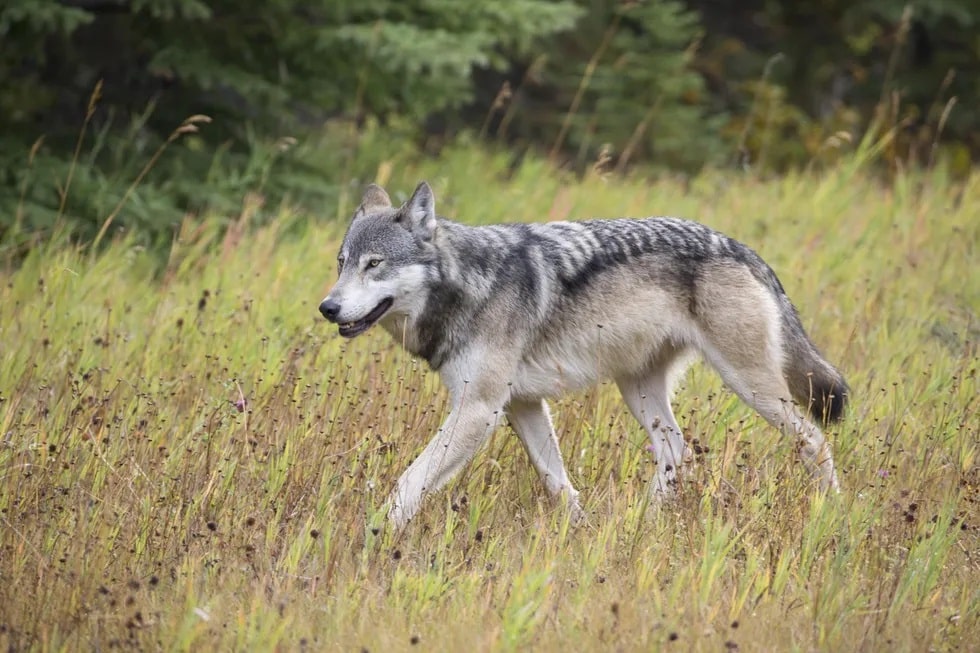
A lone wolf in eastern British Columbia, Canada, on an autumn day.
Photo by Donald M. Jones
The strangest thing happened in Montana in 2020. Hundreds of thousands of pandemic refugees moved into the state, which has but a thirty-day residency voting requirement. In a state of only one million people, it would be impolitic but not inaccurate to call it an invasion.
The side that was against wolves won, fair and square, but I feel sure the new voters, who had moved here for the scenery, clean air, and clean water, were dismayed by this new war on Montana’s wildlife.
If so, they had to have been unpleasantly surprised by the actions of the new governor and congress. At both the state and federal level, a seemingly endless bevy of anti-wildlife measures came rolling out of the new office holders, reversing the very laws that had protected the wildlife that was a driver of Montana’s economic health. (Eight million visitors to a state of one million, in one national park alone.)
It would be difficult to identify the most egregious bill, but one that will serve as example would be essentially an open season on wolves (each hunter allowed to trap and/or kill up to twenty wolves), so long as the kill rate does not exceed 90% of the population; and with a $1000 bounty providing added incentive.
Montana is buckling, then. It’s not because of just one man, a new governor, though he’s certainly doing great damage. He’s appointed a new roster to oversee the state’s game and fish commission, and they have almost immediately expanded the elk “damage hunt”—previously limited only to private land where agricultural interests (the growing of hay to feed cattle) were “threatened” by large herds of hay-eating elk that have proliferated as more and more wolves are killed. Now hunters in special agricultural districts can shoot and kill cow elk on private or public lands for six months out of every year.
I should point out here that numbers don’t mean everything. Simply counting the numbers of animals—whether elk, or wolves, or anything else—is what’s called “bucket biology” or “supermarket biology,” predicated upon a put-and-take transactional relationship. It is no science at all, really, for it avoids what are the more important nuances, which include demographics, age structure, herd or pack institutional habits and knowledge, private/public land practices, habitat (more erratic a measurement than ever as we wade waist-deep now into the fires of global warming.) And with species as endangered as grizzly bears, it’s all the more important to look beyond the misleading simplicity of numbers. What often is taken away is not always so easily replaced. One hundred wolves doesn’t always mean one hundred wolves.
Proud of its hunting tradition, Montana, like many other states, has historically offered a youth-only hunt the week before the general hunting season begins. It’s a way for hunters sixteen years old and younger to have the woods to themselves, hunting with a mentor. Animals are not yet wary from the pressure of so many adults pounding the hills. This year, under the governor’s new game commissioners, the state has used prison labor to pen-raise thousands of pheasants to release onto state lands the day before the youth hunt. It’s expensive, of course—about $300 per bird—and because the birds are as domesticated as caged chickens, nearly 100% of them are guaranteed to not survive in the wild, whether sluiced by hunters or not. They certainly don’t fly with the explosive, adrenalizing zeal of wild pheasants—indeed, most won’t fly at all, managing only a few slow hops. It’s little more than an Easter egg hunt, with guns.
Understand, please, I am not against youth hunting. On the contrary. But learning respect for one’s quarry is paramount—the first and greatest gift an older hunter can share with a younger one—and is requisite if hunting is to survive. Training children to participate in canned hunts is robbing them of the greatest lesson of hunting—how patience is the spiritual through-line of the endeavor and how keen observation of and attention to a native prey’s needs, habits, and patterns can be the gift of a lifetime. It’s a kind of intelligence not able to be acquired in any other manner. So eager however are the governor’s new commissioners to spill blood and count harvested units as they would bushels of corn that they have lost sight of this basic truth. If ever they themselves held or knew or were shown it to begin with.
***
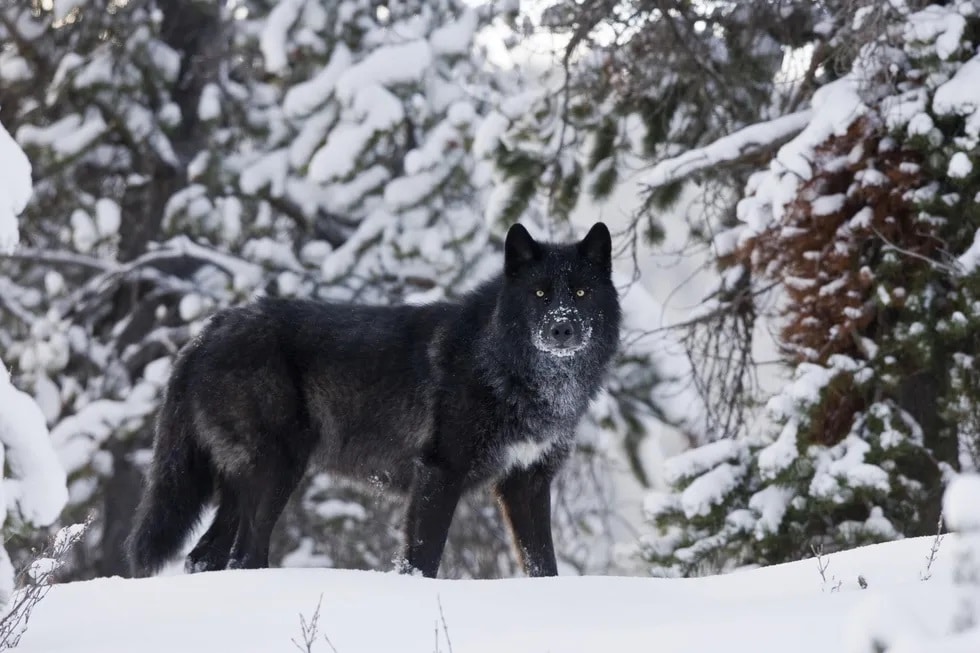
Another member of the Jacque Lake pack in Alberta, Canada.
Photo by Donald M. Jones
You might have read earlier this spring of how the new governor illegally trapped and killed a Yellowstone wolf on a private ranch. A clip in the news, then gone; pandemic, wildfire, hurricane, war. It might be assumed the governor apologized, and the great state of Montana went on its wonderful way, wild and vast and rugged.
The reason people like to kill wolves but not dogs is beyond me, and involves, I think, something much larger and more dangerous than merely fear. It’s easy to say fear-of-the-wild—which is to say, fear-of-loss-of-control—unlike at home, where dogs will sit, heel, fetch slippers, all that kind of subservient stuff. But watching the events unfolding in Montana this year, I realize I can no longer indulge even that explanation; for following the crime against wolves (another misdemeanor charge for the governor, committed yet again with but a public service sentence), the state legislature introduced bills to trap and kill otters, possibly the most playful and joyous creatures in the animal kingdom—puppies and kittens and our own darling selves included. No one fears otters. (Lest any trappers bring up their economic livelihoods and contribution to the Montana economy, it should be noted that an otter pelt—an abomination, that word, pelt, the word for the thing only when it is skinned from its possessor and is still damp with blood and membrane—brings about nine dollars.)
In the statehouse, the Republican governor and Republican-controlled House and Senate, along with U.S. Senator Steve Daines, are proposing, yet again, de-listing grizzly bears from protection under the Endangered Species Act. This would simultaneously open a trophy hunting season on them. This is a sentient being with the third-slowest reproductive rate of any land mammals in North America. (Only the nearly extinct black-footed ferret, and the nearly extinct muskox, are slower).
What does this have to do with wolves or, for that matter, like the wolves’ shadows cast some slight distance ahead, dogs? It’s an understandable question, but I think that to ask it hints at one of the underlying fundamental failures that’s created a culture where such carnage can be tolerated, even abetted—much less monetized, feted, celebrated. Rampant in the shooting community now are killing contests, often occurring within the fenced and inescapable boundaries of private land, with awards being given for the most animals killed, or the largest, or even the smallest.
Growing up as a child in the 1950s and 60s, I heard it often: fish don’t feel pain. Animals don’t grieve. They would have died anyway. And so on and so forth, while we perceive that the lives of those we have captured or corralled through the relentless domesticity of selective breeding are protected in a separate compartment, allowed to have feelings and sentience, imprisoned in the same sort of moral silo where a certain culture or race of humankind is relegated to lesser or greater.
We tell ourselves that otters eat fish. We tell ourselves that wolves eat deer. (Not enough deer, evidently, for in communities around the West, chronic wasting disease—an encephalic virus similar to mad cow disease—is spreading like, well, wildfire). We tell ourselves that grizzly bears can and sometimes do harm people: almost always an out-of-tune hunter, not paying attention to wind direction, river-sound, fussing magpies, or the scent of a day-old meat-kill nearby, or fresh scat in the berry field, or tracks, or any of a great and perhaps infinite number of clues that are not so difficult to notice, requiring really only the gentle manners and gratitude—the respect—one should evince upon entering any other home, whether of an acquaintance or a stranger. We are all wayfaring strangers. We have all only just arrived.
***
It’s an interesting question, about whether we bred dogs to fit our needs and desires, or they have shaped and sculpted us to fit theirs. As with most of these types of questions, the answer is probably both. My own dogs could be said to exist somewhere in the borderlands between the wild and the domestic, in that they have been bred—chosen—over years to assist in hunting. My French Brittanies—somber, even cautious Linus, and impish Otis, half-brothers, five and four—find for me each autumn the hidden secrets of birds, and, I have to say, are possibly the most beautiful dogs I’ve ever had. They’re lovely to look at, and sweet. (And yet, in the field, all that affection falls away. They’re all business. They’re no longer pleasing me, so much. They’re pleasing themselves, pleasing their blood. Though in that, they please me.)
My aging German shorthaired pointer, the queen of the pack, Callie (named for the blues song, “Caledonia/What Makes Your Big Head/So Hard?”), is a phenomenon, a mind reader (as are all dogs), but even more so afield when, while trailing a runaway rooster pheasant, Callie works to triangulate with me to push the rooster out to some terminus not yet reached, which will allow me the best shot.
Her education has not come easily, tens of thousands of hours in the hills and snow and rain and wind, but it has been a great joy. The miracle of her in bird season is somewhat of an addiction; and even at an advanced age, she is a physical marvel, ceaseless in her enthusiasm and endurance. A bit more wild than not, for that.
***
As Doug Chadwick reminds us in his brilliant new book, Four-Fifths A Grizzly, we share 80% of the genetic coding with them. Think about that for a minute. And while you are thinking about it, consider please looking at it from a slightly different perspective: that the grizzly has been on the planet—this planet, the only one we have—millions of years, while we, at only 180,000 years young, are new to the party, not even kindergarteners. What I mean to say is, the grizzly is 100% grizzly, rather than 80% human. And a wolf is 100% wolf, not 99% dog. Remind me—why are we killing them?
***

Another Jacque Lake wolf. The pack let the photographer spend six hours with them, taking pictures.
Photo by Donald M. Jones
What’s sad—I think it’s farther out on the scale, beyond merely “ironic”—is that just as we are beginning to learn more about the sentience of animals—not just whales, dolphins and gorillas, but even the meek, including just about any kind of bird one might want to sit down with and spend a few decades studying, or just paying attention (which some say is a type of prayer). Even the dinosaurs who, though we like to joke about their having gone extinct, were here millions of years longer than we have been, and millions of years longer than it seems we will be.
Others of the original long-term passengers on the ark are also free-falling into extinction. Well, they’re being pushed. By us, of course.
If an animal, an organism, can feel any of the five senses, it is then, by definition, sentient. A beautiful, dignified word, it is the exact opposite of extinction: about as lonely a word as might be. A creation, long established in the world in so many complex ways, being erased. As if it never was. And with the things to which it was connected or attached sagging then, further marginalized, further at risk. There go a hundred million good years, we might say. Good times were had. While we the depauperate are left with empty plastic six-pack rings, Styrofoam cups, rubble of asphalt, burning tires.
Seventy-five Sumatran rhinos. Between twenty and twenty-five grizzly bears in northwest Montana’s Yaak Valley. What a brutal impoverishment—not just to the last few of anything, but to us. As if we have been considered and evaluated by some deity, and found to be lacking. Found to be unworthy of a world with such miraculous creatures any longer in it.
The sentience beyond our own shimmers in fragments, just out of reach. It moves away from us, I think, shying from our approach now. We worry, rightfully, about glassine invisible fragments of viral threads entering us in various loads and concentrations, colonizing our immune systems and respiratory systems, our brains, our blood, our essence—replacing our clarity with fog—even as we stumble and wallow through wild nature’s invisible spheres of grace, shattering them, pushing them away. And again, we wonder why we are anxious, or frightened, or lonely, or all of the above.
Why do we fear wolves and bears, but not dogs? Why do we fear wolves but not ourselves? Wolves and bears are almost surely more frightened of us than most of us are of them. What has happened to us, what is happening to us? Sometimes it’s almost as if we’re not paying real attention to the physical world in which we live. That we exist, increasingly, only in our heads, and that in our heads there is only fear.
Strange as it may sound, I think many of the killers are simply the product of a culture that some time ago stopped noticing things: so that now there is no questioning, only the mimicking of those who have preceded them. That an object in motion tends to stay in motion.
Anything we can do then to slow that down offers hope.
So too does big wild country—wilderness—lands vast enough where the things we’d otherwise kill still have a chance to hide. A chance to keep moving away from us, when we approach. To feel, know, when we enter the forest or the grasslands with violence in our hearts, and in our souls. If only in Montana—and the rest of this shining, great world—we can slow down. A person tends to notice more, when they slow down. A person tends to hear more. It gives a person a little time to think, whether they have a gun in their hands or not.
subscription
LOVE, DOG



